"Counterpartis Aviation". Part 2
In addition to the United States, the creation of a specialized "anti-serf" attack aircraft engaged in Argentina. The aircraft, which received the name IA-58 "Pucara", was created according to the concept adopted in the OV-10 "Bronco". But it was different from him tail and more powerful gun-guns.
This small, elegant, straight-wing turboprop aircraft became the first production fighting vehicle developed and built in Argentina. It was produced from 1974 to 1988 year, during which time around 120 machines were built.
The attack aircraft was created on the basis of combat experience aviation during the battles with the guerlieros in the province of Tucuman. The key requirements of the Argentinean military to the aircraft were good takeoff and landing characteristics (the required runway length is not more than 400 m) and high maneuverability at low altitude, which provides an attack on small, well-disguised targets and avoiding anti-aircraft fire. The plane has a reservation protecting the cockpit from the bottom of the fire weapons caliber 7,62 mm at a distance of 150 m.
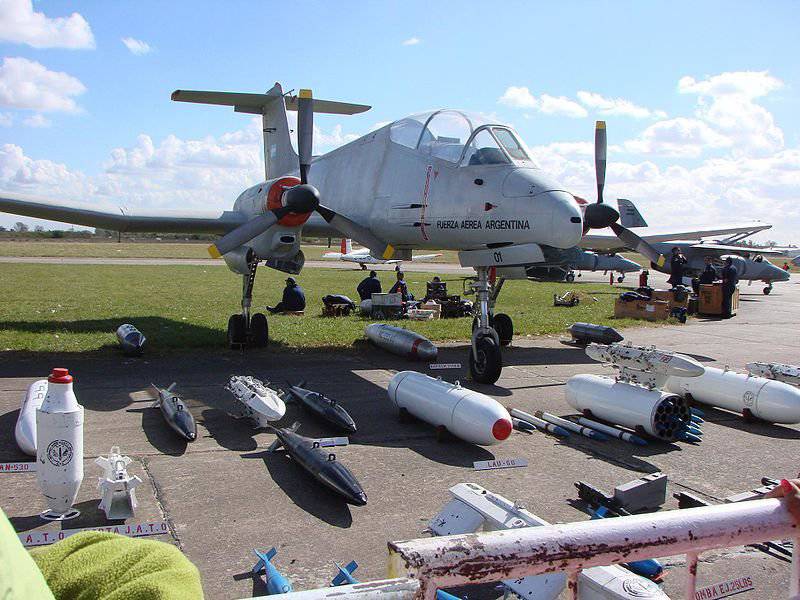
"Pukara" carries a powerful built-in small arms and cannon armament, consisting of two 20-mm cannons and four 7,62-mm machine guns. On seven nodes of the external suspension it is possible to place a combat load of up to 1500 kg in weight.
The stormtrooper, created to fight the partisans, took part in a short-lived but fierce Argentine-British conflict over the Falklands. During which these slow-moving turboprops struck British ships fleet and the paratroopers who landed on the islands.
For its intended purpose, the aircraft were used in Colombia and Sri Lanka, where they showed themselves well. In addition to the ground attack targets in the jungle, they served as gunners and coordinators for high-speed jet vehicles.
Currently, only a few IA-58 "Pukara" airplanes are in working condition.
Another type of specialized anti-partisan machines became the so-called “ganships”. The idea of creating such an attack aircraft is to install a powerful battery of rifle guns one by one on a military transport aircraft. The fire is fought when the plane turns towards the target.
For the first time in a combat situation in Vietnam, this was implemented in 1964.
On the piston transport C-47 "Dakota" (produced in the USSR as Lee-2) on the left side were installed 3 machine-gun 7,62-mm six-barreled container SUU-11: two - in the windows, the third - in the cargo door opening. The collimator mark Mark 20 Mod.4 from the A-1 Skyraider attack aircraft was mounted in the cab and installed additional radio communications.
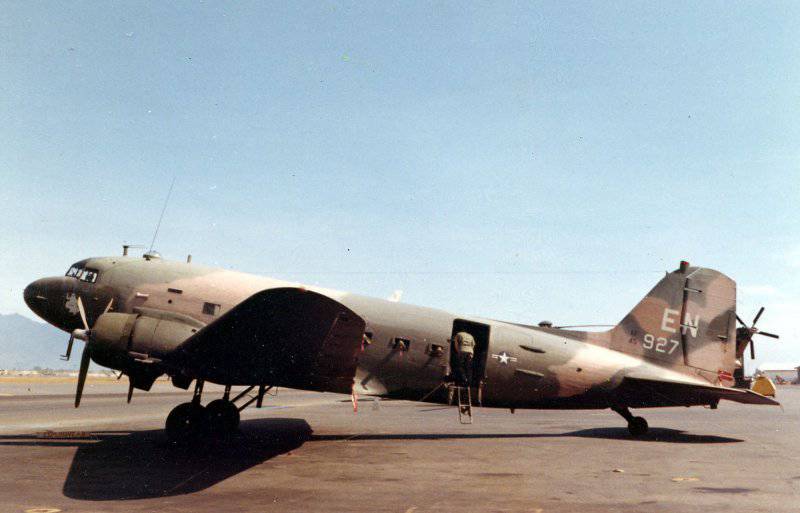
In one of the first combat sorties, AC-47D with its fire disrupted an attempt of night storming by the Viet Cong stronghold of government troops in the Mekong Delta. The rain of tracer bullets against the night sky made an unforgettable impression on both warring parties.
Such a successful combat debut finally convinced the Americans of the viability and effectiveness of such aircraft. In the spring of 1965, an application for the conversion of another 20 C-47 was issued.
Being very effective, the units of the "guanships" suffered one of the heaviest losses among American aircraft in Vietnam. This is not surprising: most of the flights of AC-47D were carried out in the dark without any special equipment, which is dangerous in itself in the difficult conditions of the Vietnamese climate and terrain. The majority of the “gunships” were older than their young pilots, who also had a very small raid on airplanes with piston engines. The short range of the weapons made the crews work from heights of no more than 1000 m, which made the aircraft vulnerable to anti-aircraft fire.
AC-47D was commonly used in conjunction with other aircraft: ground attack aircraft, reconnaissance aircraft, and A-1E and O-2 fire controllers, and C-123 Moonshine lighting aircraft. When patrolling rivers and canals in the Mekong Delta, near the “hugs”, the multipurpose OV-10A Bronco often acted. AC-47D is often the B-57 fighters or bombers themselves.
At the beginning of 1966, AC-47D began to be attracted for flights in the area of the “Ho Chi Minh trail”, since the capabilities of the “ganships” were perfectly suited to combat traffic on it. But the rapid loss of six AC-47D from anti-aircraft fire of large-caliber machine guns, 37-mm and 57-mm guns, which were in abundance in the area, forced to abandon their use over the "path". In 1967, the Seventh US Air Force in Vietnam had two full squadrons armed with AC-47D. Until 1969, they were able to retain more than 6000 “strategic villages”, strong points and firing positions. But the Americans switched to more advanced versions of the "huts", and the hopelessly outdated AC-47D transferred to the allies. They hit the air forces of South Vietnam, Laos, Cambodia, Thailand. The last AU-47 ended their careers in El Salvador at the start of the 90s.
The success of the AC-47D led to a sharp increase in interest in the "hugs" and the emergence of many projects of this class of aircraft. Fairchild has taken the C-119G Flying Boxcar twin-engine transport aircraft as a basis. It was made according to the two-beam scheme, had a somewhat larger size than the C-47, and was equipped with much more powerful piston engines for the 3500 hp. The latter allowed him to fly at a higher speed than the C-47 (up to 400 km / h) and take up to 13 tons of payload.
Although the armament of the AC-119G consisted of the same four machine-gun containers SUU-11, firing through portholes of the left side, its equipment became much more perfect. It was equipped with a night vision surveillance system, a powerful 20 kW floodlight, a fire control computer, EW equipment.
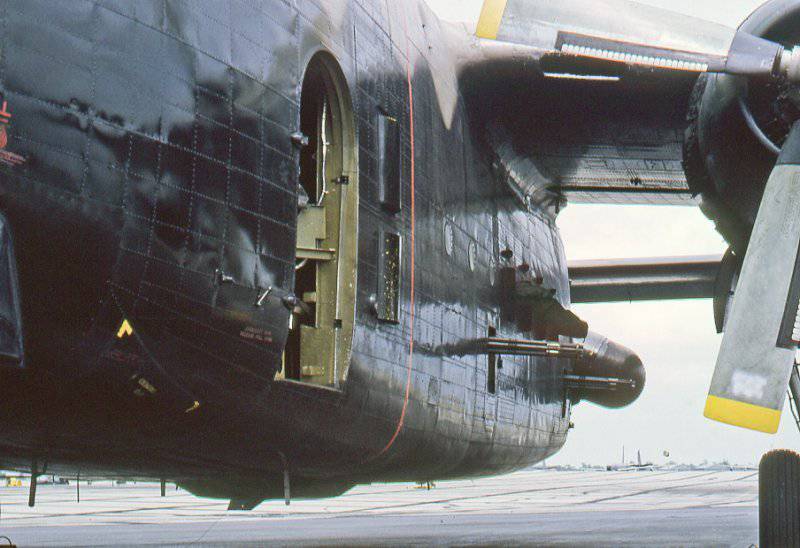
The crew was protected by ceramic armor. In general, according to American estimates, the new aircraft was approximately 25% more efficient than AC-47D. The first AC-119G arrived in May 1968 of the year (100 days after signing the contract).
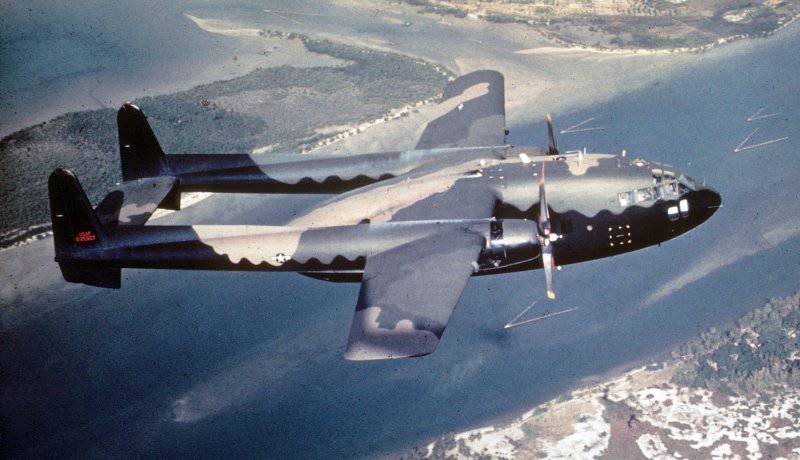
The next series of X-NUMX aircraft AC-26K entered service in the fall of 119. On them, in contrast to the AC-1969G, except for piston engines, on the pylons under the wing, they installed two turbofan engines using 119 kgf.
This refinement has facilitated operation in hot climates, especially from mountain airfields. Significantly changed the composition of equipment and weapons.
The new "gunship" received a navigation system, a viewing IR station, side-looking radar, search radar. To the four "Miniguns" that fired through portholes of the left side, were added two quick-firing six-barreled M-61 Vulcan guns with 20 mm caliber installed in special embrasures. If the AC-47 and AC-119G aircraft could effectively hit targets from a range of no more than 1000 m, thanks to the presence of guns, the AC-119K could operate from a distance of 1400m and heights of 975m at roll in 45 ° or 1280 m at 60 ° roll. This allowed him not to enter the zone of effective destruction by large-caliber machine guns and small arms.
The AC-119 variants were used differently. If AC-119G was used for night and day support of troops, defense bases, night target designation, armed reconnaissance and target illumination, the AC-119K was specially developed and used as a “truck hunter” on the “Ho Chi Minh trail”. Hitting the shells of its 20-mm guns disabled most types of used cars. Therefore, some crews of the AC-119K often abandoned ammunition for 7,62-mm machine guns in favor of an additional number of 20-mm projectiles.
By September 1970 of the year on the official AC-119K account, their number was 2206 destroyed trucks, and the best praise for AC-119G pilots could be the words of one of the leading aircraft manufacturers: “To hell with F-4, give us a ganship”! The AU-119 is also famous for the fact that it was the last aircraft shot down during the fighting in Vietnam.
The Air Force wanted to get even more powerful aircraft, such a shock machine was created on the basis of the four-engine turboprop C-130 "Hercules".
The aircraft received an 4 machine-gun module MXU-470 and four 20-mm M-61 Vulcan cannon in special embrasures on the port side. It was equipped with a night vision surveillance system, side-view radar, fire control radar, searchlights with 20 kW power and on-board fire control computer.
In one of the first combat sorties of the AC-130 Gunship II, a motorcade from 10-ti trucks heading south was destroyed by means of a night-vision system and in 6 minutes.
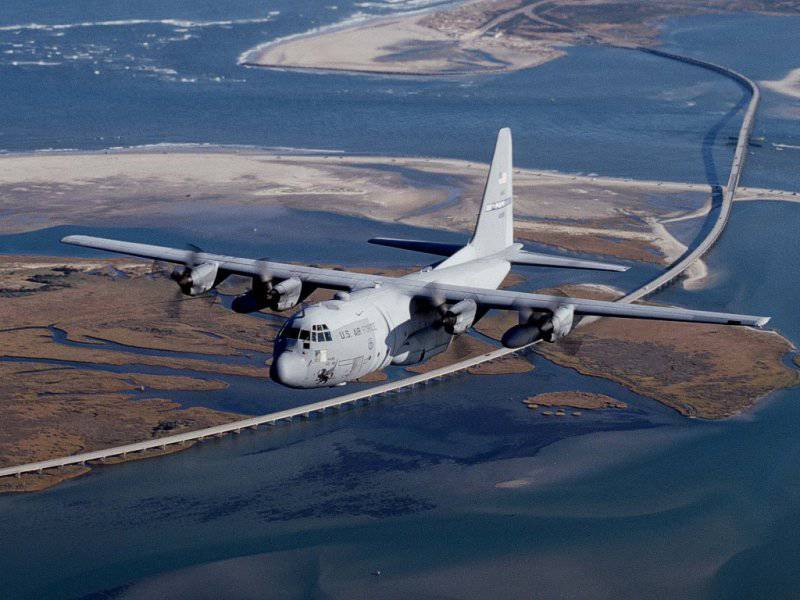
The following modification, called AC-130A, had the same weaponry as the prototype, only the equipment changed: they received a new IR viewing station, a fire control computer and target designation radar. The experience of using the AC-130А aircraft resulted in the replacement of two 1969-mm M-20 cannons with semi-automatic Bofors М61А2 cannons with 1 mm caliber in 40, which made it possible to hit targets when flying with 45 tilt from 4200 heights to range with a roll 6000 ° - from a height of 65 m at a distance of 5400 m.
In addition, the aircraft installed: low-altitude TV-system, side-looking radar, laser rangefinder-pointer. In this form, the aircraft became known as the AC-130A Surprise Package.
In 1971, the US Air Force received even more advanced AC-130E aircraft, created on the basis of the C-130E (11 in total). During this period, the North Vietnamese used a large number of tanks (according to American estimates, more than 600 pcs.) To combat them, on the AC-130E, instead of a single 40-mm gun, they installed an on-board computer, but manually charged 105-mm infantry howitzer from World War II (shortened, lightened and on a special gun carriage )
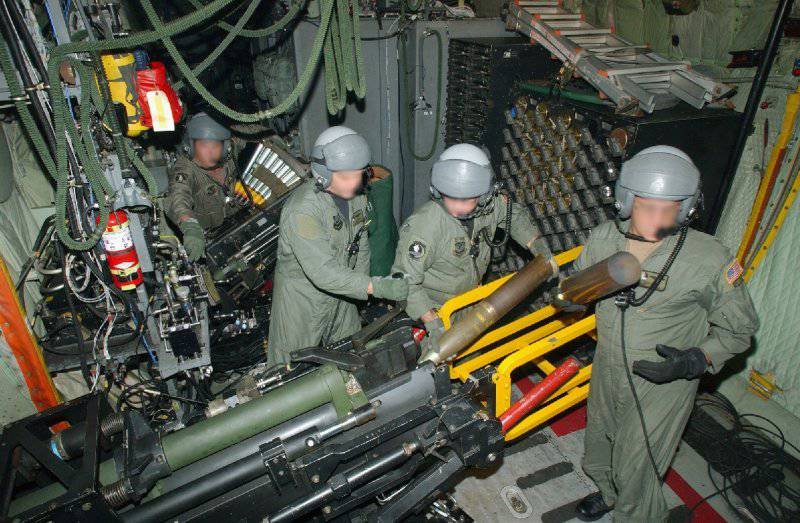
In March, the 1973 of the year, the last of the “huts” that flew in Vietnam, appeared: АC-130Н Pave Specter, featuring more powerful engines and completely new on-board equipment.
Since 1972, the Viet Cong began a massive use of Soviet Strela-2 MANPADS, making any flight at low altitude unsafe. One AC-130, receiving an 12 on May 1972, hitting a rocket, was able to return to base, but the other two were shot down. To reduce the likelihood of missiles coming with infrared homing heads, many AC-130s were equipped with refrigerators — ejectors that lowered the temperature of the exhaust gases. For jamming radar air defense systems on the AC-130 with 1969, began to install suspension containers EW ALQ-87 (on 4 pcs.). But against the "Arrows" these events proved ineffective. The combat activity of the Ganship was significantly reduced, but they were used until the last hours of the war in Southeast Asia.
After Vietnam, the AU-130 aircraft were left without work for a long time, interrupting their idle year in October 1983 during the US invasion of Grenada. The crews of the "ganships" put down several batteries of Grenada small-caliber anti-aircraft artillery, and also provided fire cover for the landing of paratroopers. The next operation with their participation was “Just Cause” - the US invasion of Panama. In this operation, Rio Hato and Paitilla airbases, Torrijos airport and Balboa port, as well as a number of individual military facilities, became targets of the AU-130. The fighting did not last long — from December 20 1989 to January 7 1990.
This operation was as though specially intended for "ganships". The almost complete absence of air defense and a very limited conflict area made the AU-130 the kings of the air. For aircraft crews, the war turned into training flights with shooting. In Panama, the crews of the AU-130 worked out their classic tactics: the 2 aircraft went into a turn in such a way that at a certain point in time they were at two opposite points of a circle, while their whole fire converged on the ground in a circle with a diameter of 15 meters, literally destroying everything that got in the way. During the fighting aircraft flew during the daytime.
During the "Storm in the Desert" 4 aircraft AC-130H from the 4 squadron made 50 sorties, the total flight time exceeded the 280 hours. During the operation, it turned out that in the desert conditions, in the heat and the air saturated with sand and dust, the infrared systems of the aircraft were absolutely useless. Moreover, one AC-130H while covering ground troops in the battle for Al-Khafi was shot down by an Iraqi air defense missile system, the entire crew of the aircraft was killed. This loss confirmed the well-known truth from the time of Vietnam - in areas saturated with air defense systems, such aircraft have nothing to do.
Aircraft of various modifications of the AU-130 continue to be in service with parts of the Office of Special Operations of the US Air Force. As the early versions of the AC-130 are written off, new ones are ordered on the basis of the most modern C-130J version with an extended cargo compartment.
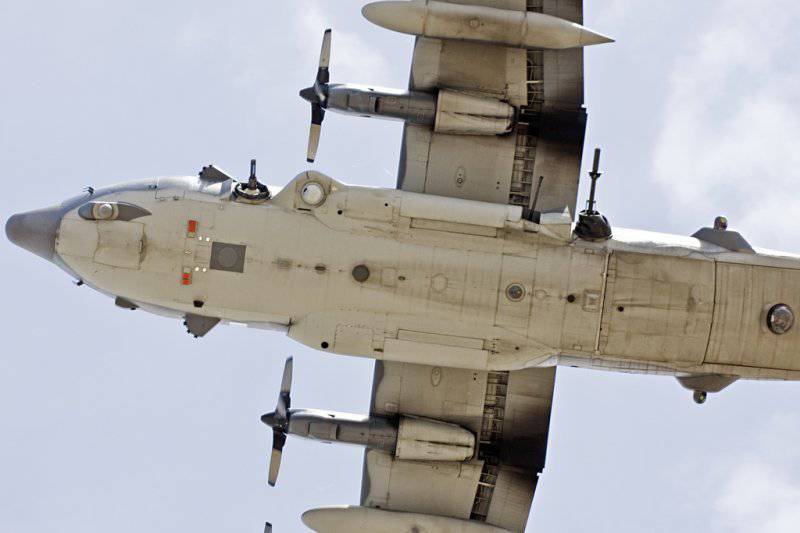
Another armed aircraft based on the "Hercules" is the MC-130W Combat Spear.
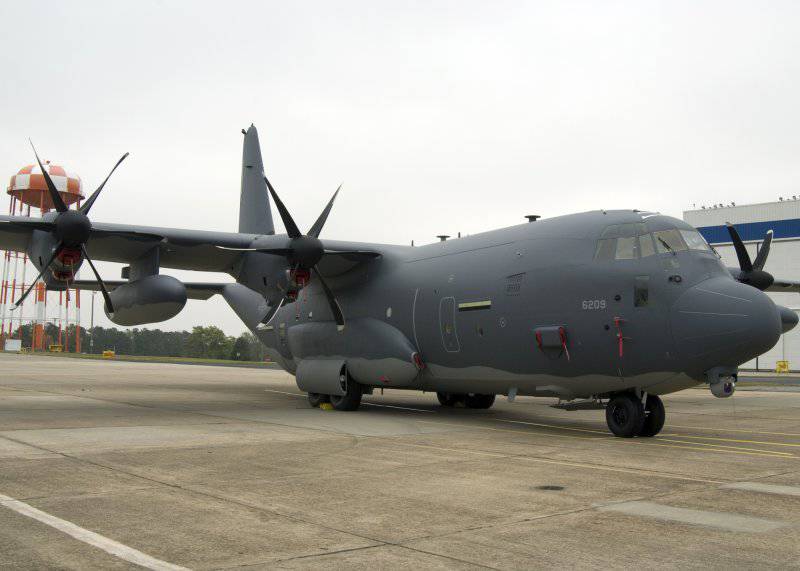
Four squadrons in service with MS-130 aircraft are used for deep raids into the depths of the enemy’s territory with the aim of delivering or receiving people and goods during special operations. Depending on the task being performed, the 30-mm Bushmaster cannon and Hellfire missiles can be installed on it.
The story about the "counterguerrilla ganships" would be incomplete without mentioning the smallest aircraft of this class: Fairchild AU-23A and Hello AU-24A. The first was a modification of the well-known single-engine transport aircraft Pilatus Turbo-Porter, commissioned by the Thai government (a total of 17 such machines were built).
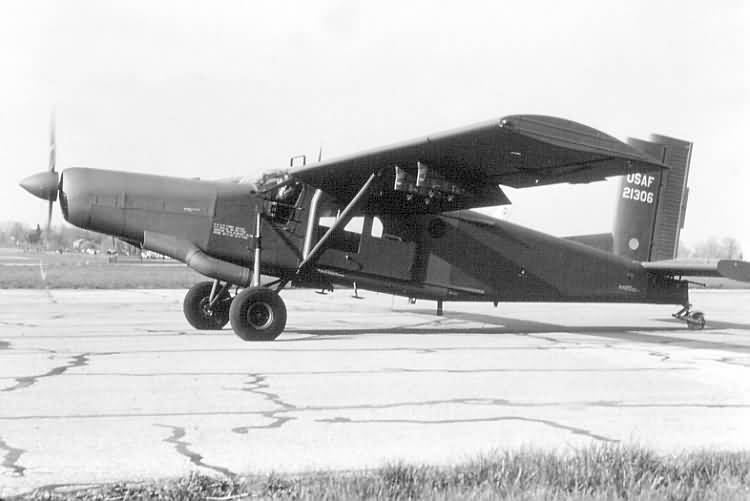
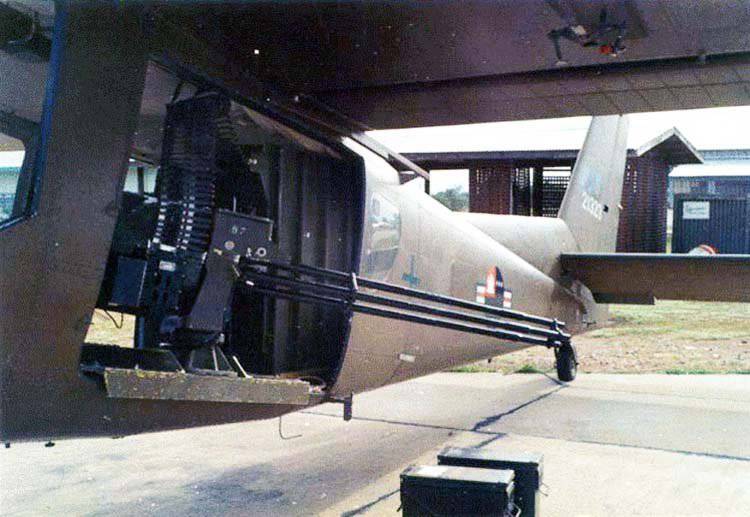
The main weapon of these light machines was a triple-barreled 20-mm gun. Additionally suspended NAR and bombs.
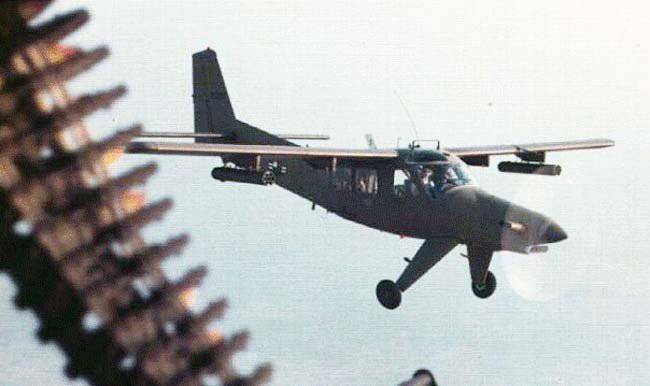
The second represented exactly the same alteration, carried out on the basis of the aircraft Hello U-10A. 15 such aircraft transferred to the Cambodian government, intensively flew and participated in the battles.
In addition to the United States, work on armed aircraft of this type are conducted in other countries.
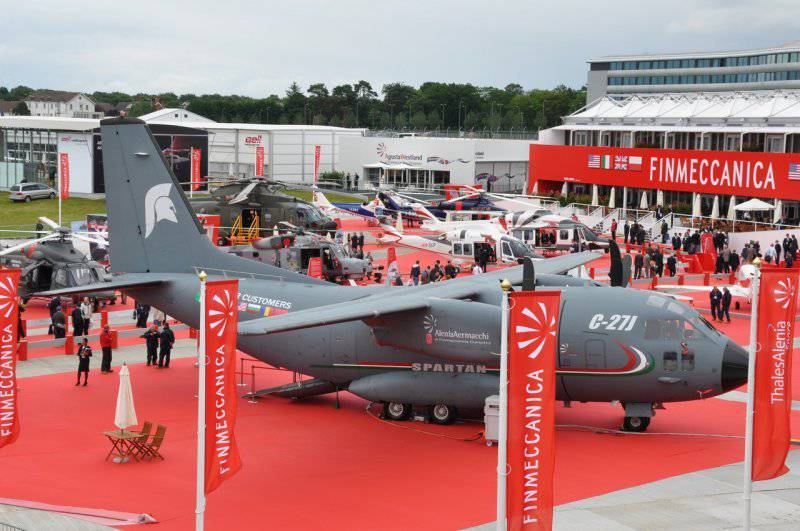
An Italian demo of the MC-27J was shown at the Farnborough air show. It is based on the C-27J Spartan military transporter. The development is carried out under the program for creating low-cost multi-purpose aircraft carrying fast-mounted weapons made in containers.
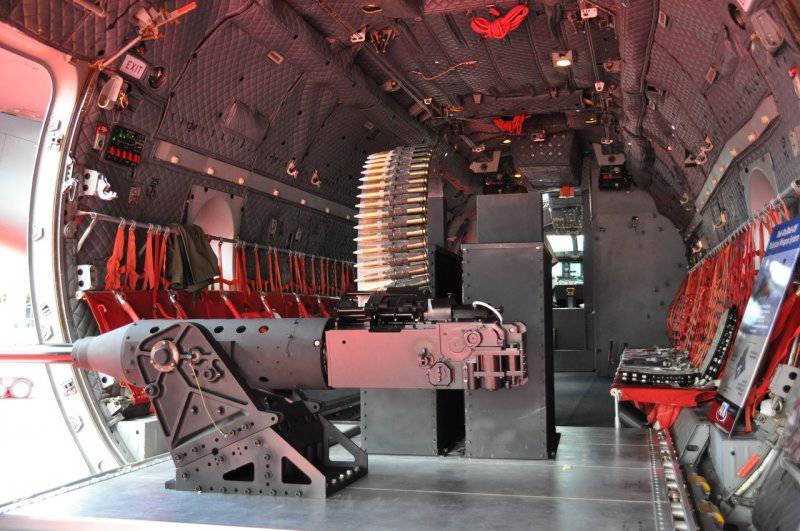
The main caliber of such weapons - 30-mm. The ATK GAU-23 automatic cannon, which is a modification of the Mk 44 Bushmaster, was demonstrated at the air show. This system is mounted in the cargo compartment. The fire is carried out of the cargo door on the left side.
currently armed Drones significantly pressed light "counter-guerrilla" attack aircraft. However, along with numerous advantages, RPVs have significant disadvantages. They, unlike the attack aircraft, are not capable of carrying a significant ammunition load on board, and are intended rather for observation, reconnaissance and delivering pinpoint single strikes. The attack aircraft is able to "iron" the target for a long time. Attack aircraft control cannot be lost when the enemy uses electronic warfare, as is often the case with RPVs. Manned aviation is still more flexible in use, it is less dependent on weather conditions than drones. Given all this, the demand for light specialized attack aircraft in the world is not decreasing.
The US Air Force announced the purchase of a batch of A-29 Super Tucano light turboprop attack aircraft manufactured by the Brazilian company EMBRAER. The aircraft will be used in Afghanistan and other troubled regions. In addition to strikes on ground targets, reconnaissance and adjustment, these aircraft are capable of intercepting low-speed aerial targets.
The cockpit of the A-29 is protected by Kevlar armor. Built-in armament consists of two 12,7-mm machine guns. On the external suspension is placed up to 1500 kg of combat load. In the past, these planes were successfully used by a number of countries to fight rebel and terrorist groups.
Iraq ordered AT-36B Texan II aircraft in the US for 6. These twin turboprop aircraft, in addition to the built-in armament of two 12,7-mm machine guns, are capable of carrying various armaments. Including Hellfire and Maverick missiles, Paveway II / Paveway III / Paveway IV and JDAM guided bombs.
The Iraqi Air Force has also Cessna AC-208B Combat Caravan light attack aircraft, the main weapon of which are two AGM-114 Hellfire missiles. The aircraft is based on a single-engine turboprop general-purpose aircraft Cessna 208B Grand Caravan and is designed for counterinsurgency operations. The aircraft is operated from 2009 year.
According to Iraqi officials, a wide range of guided weapons is needed to avoid incidental damage when inflicting airstrikes on insurgents.
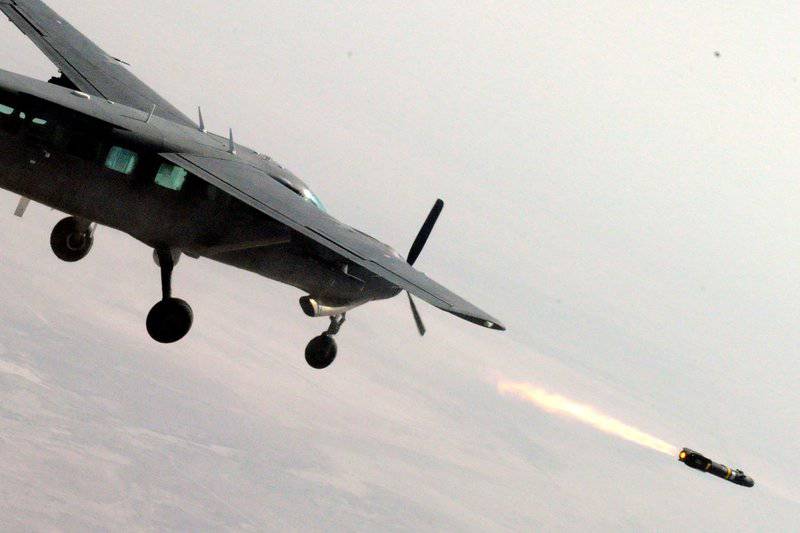
Aviation avionics allows you to perform tasks optoelectronic aerial reconnaissance and surveillance, to use aviation means of destruction. The cabin is protected by ballistic panels.
Currently in the United States is being tested light attack aircraft Scorpion.
The Scorpion ground attack aircraft has been developed by Textron since April 2012. The project also involved the company Cessna, engaged in the assembly of aircraft.
The maximum take-off weight of the aircraft is 9,6 tons. According to project calculations, the attack aircraft will be able to reach speeds of up to 833 km / h and fly to a distance of thousands of kilometers from 4,4. Scorpion will be equipped with six suspension points for rockets and bombs with a total weight of up to 2800 kg.
At the end of the eighties, the concept of the Soviet military leadership became widespread: in the event of a nuclear strike, the Union fell into four industrially isolated regions — the Western Region, the Urals, the Far East, and Ukraine. According to the plans of the leadership, each region, even in difficult post-apocalyptic conditions, should have had the opportunity to independently produce an inexpensive plane for attacking the enemy. This aircraft and was supposed to be easily reproducible attack aircraft. In Sukhoi Design Bureau, within the framework of the LVS program, several variants with turboprop and turbojet engines were considered.
The winner was the project T-710 "Anaconda" assembled by the type of American aircraft OV-10 Bronco. Take-off weight was assumed to 7500 kg. At maximum fueling, the mass of the normal combat load 2000 kg. In the overloaded version it can carry up to 2500 kg of combat load. The plane had 8 points of suspension arms, 4 on the wing and 4 on the pylon under the fuselage. The nose of the fuselage, taken from the Su-25UB (along with a twin 30 mm gun GSH-30), behind the pilot's cabin is an armored compartment for separating paratroopers. The use of TV7-117М engines for 2500 HP was assumed, the engine nacelles were closed with armor, six-bladed screws. The speed with these engines was assumed to be 620-650 km / h.
Another promising project was the T-502 lightweight training ground attack aircraft. The aircraft should provide training for pilots piloting jet aircraft. To this end, the propeller and the turboprop or two engines were combined into one package and placed in the rear fuselage. Double cabin with a common lantern and tandem arrangement of ejection seats. It was assumed the use of cabins from the Su-25UB or L-39. On suspension points you can place weapons weighing up to 1000kg, which made it possible to use the aircraft as a light attack aircraft.
On these light attack aircraft it was planned to make extensive use of units from mass-produced aircraft. A full process of purging models at TsAGI was carried out, but interest in the project has already cooled, despite the support of MP Simonov. Modern management has also given this interesting development to oblivion, despite the fact that there is a clear tendency in the world to transition from complex A-10 machines to simpler ones, created on the basis of turboprop converters or, in general, on the basis of agricultural turboprop aircraft.
The need for this type of aircraft is now in our country. A light "anti-terrorism" attack aircraft with the ability to act at any time of the day could be created on the basis of the Yak-130.
Due to the rejection of the co-pilot as a result of deep modernization, it is possible to improve the avionics, to increase the security and combat load. The previously developed combat version of the Yak-131 was supposed to have a built-in 30-millimeter cannon and Whirlwind missiles with a laser-beam control system. Unfortunately, this project has not received further development.
Based on:
http://www.ainonline.com/aviation-news/
http://www.cc.gatech.edu/~tpilsch/AirOps/O2.html
http://www.arms-expo.ru/055057052124050055049051055.html
http://airspot.ru/catalogue/aircrafts/type/
http://alternathistory.org.ua/proekt-shturmovika-kb-grunina-t-710-anakonda-rossiya
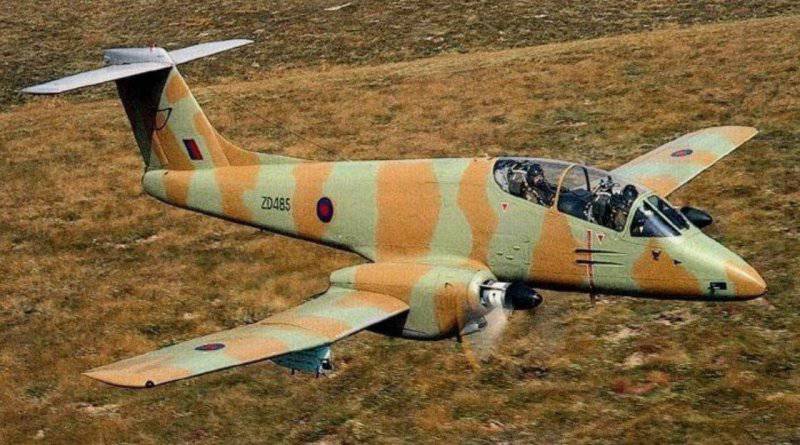
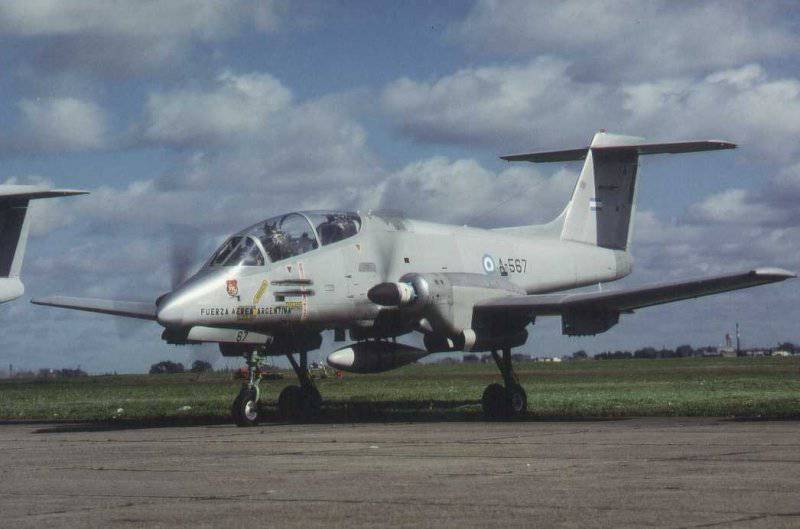
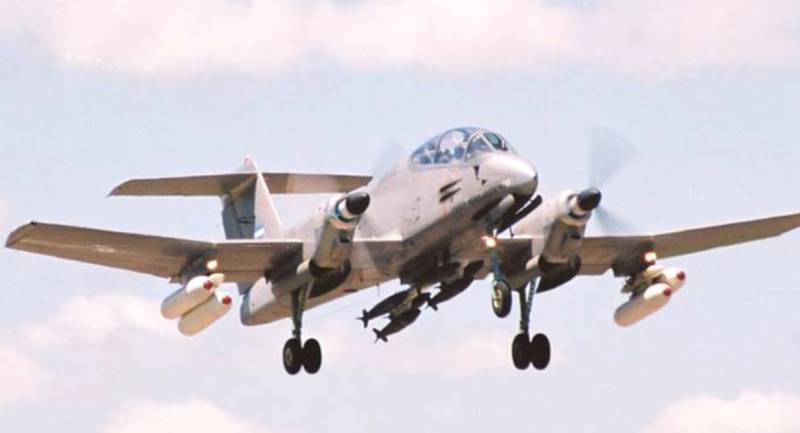
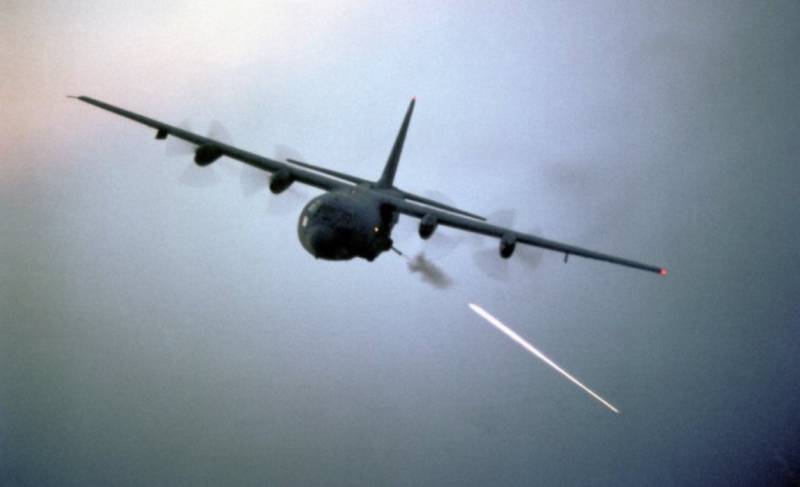
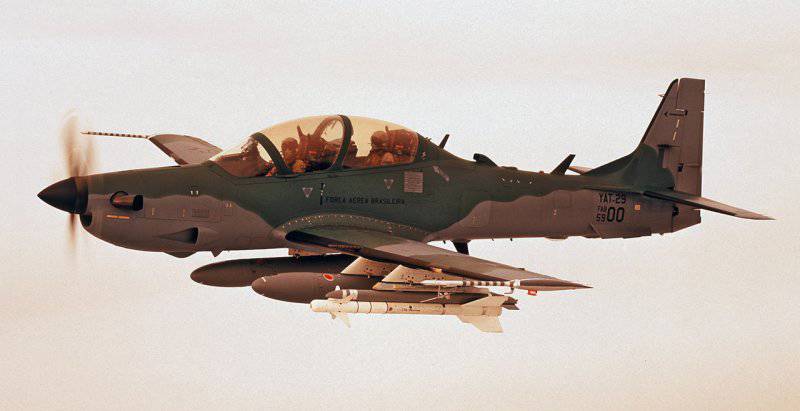
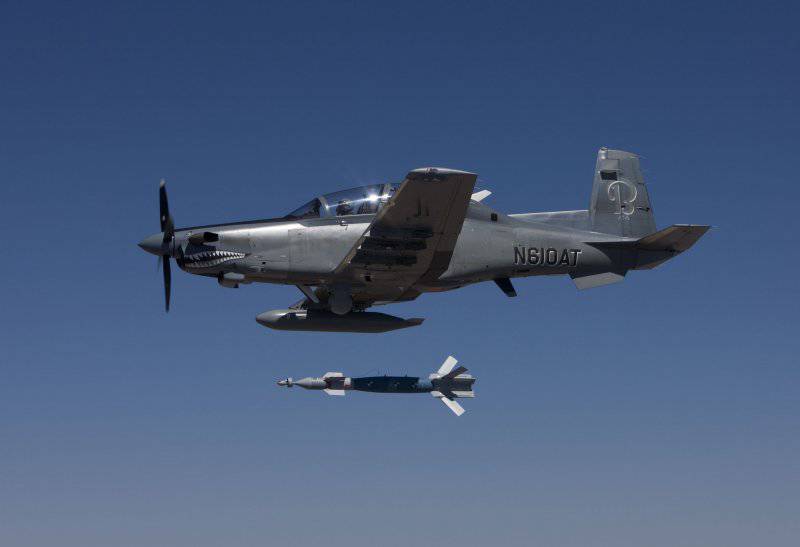
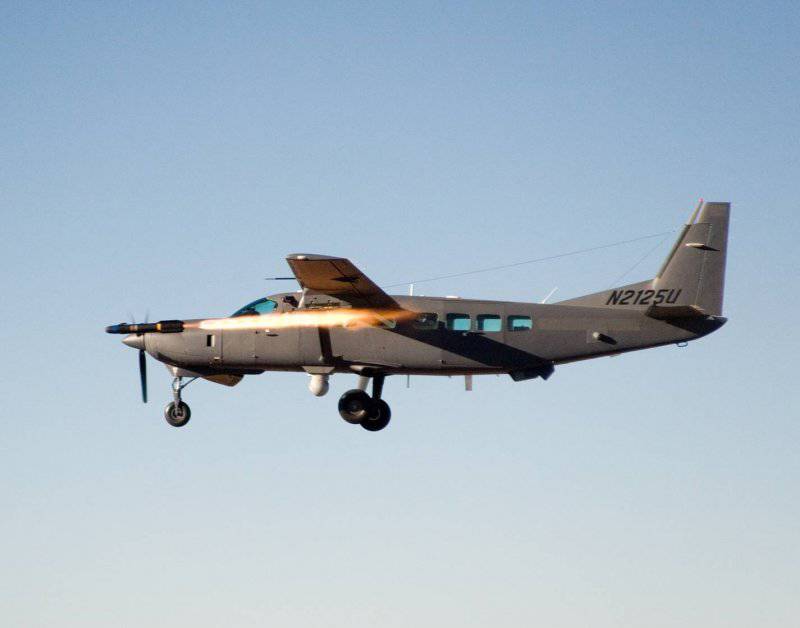
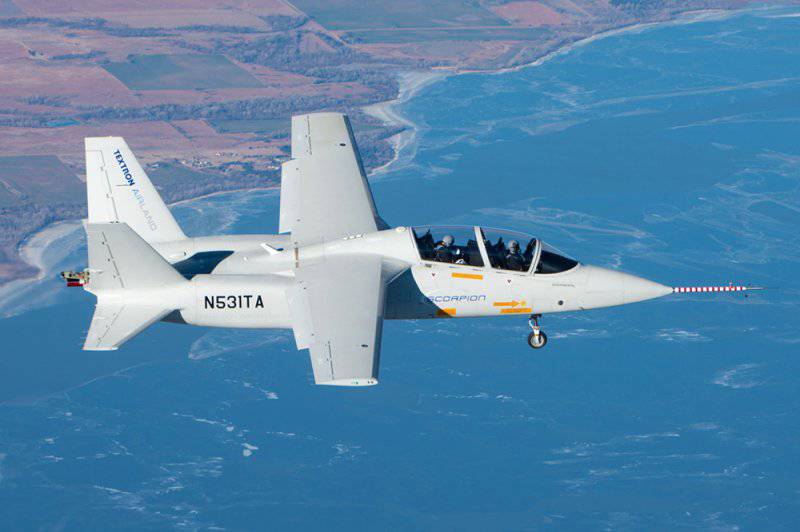
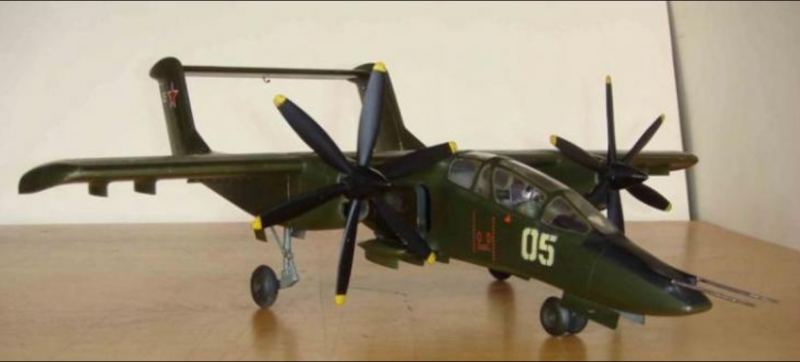
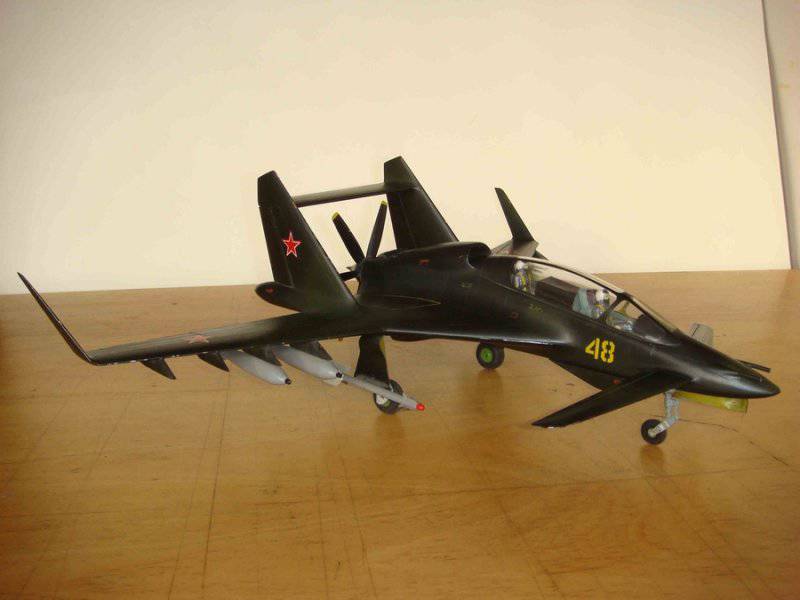
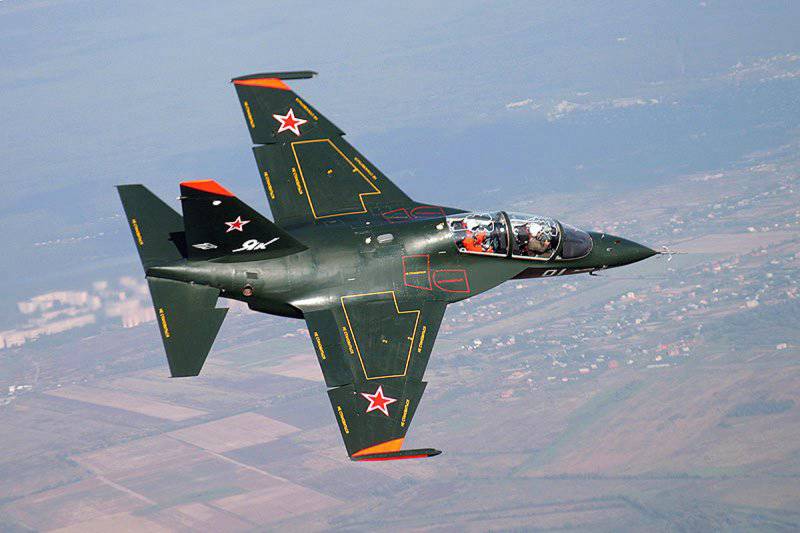
Information